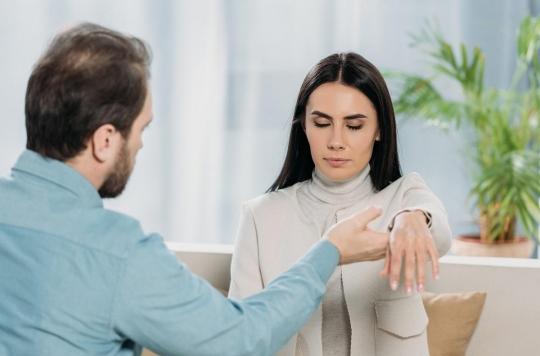Obesity, pain, addictions, stress… Proofs of its effectiveness are accumulating, making hypnosis a true medical discipline.

It used to be practiced in fairs and estaminets. We are no longer talking about charlatanism, but about a real medical discipline…
Everyone has dreamed of one day possessing this extraordinary power to hypnotize a girlfriend, a difficult client or a pushy creditor. Medicine seeks, for more noble reasons, to use this technique which dates back several thousand years. Since Antiquity, man has noticed that he possesses this gift, by word and by gesture, that nature offers to other species, such as the python, that of being able to put another man in a particular state between wakefulness and sleep, hypnosis.
Under hypnosis, in fact, we do not sleep. Consciousness remains intact but it has only one target of concentration: its body, its history and its functioning. The hypnotist, because that’s what the doctor who hypnotizes is called, unlike the hypnotist who only has to entertain and direct. This is often what holds back those who would like to be hypnotized. However, as consciousness is perfectly preserved, the hypnotist absolutely cannot impose on his patient orders that he would refuse in a normal state of consciousness. The hypnotized person finds an original mental state, which can, very schematically, be related to the first relation of the infant to the mother or to an object. It is a strong and almost exclusive relationship that the newborn needs to learn, feel safe, understand the world and become independent. This type of relationship, when triggered in adulthood by a hypnosis session, results in a state where one frees oneself from stereotyped mental patterns. This relaxation leads to a real relaxation of the body.
There is a golden rule: hypnosis suggests, but cannot, in any case, impose anything on the hypnotized person. Clearly, impossible to sign a check, give a violent order for oneself or for others.
For a long time it was only psychiatrists who, although Freud refused it, used it to fight psychosomatic illnesses. Today, it is the surgeons who prescribe it, sometimes managing to reduce the doses of sedatives against pain by five. Some even believe that thanks to hypnosis, you can do without some interventions with general anesthesia and you can even use the help of the patient, for example, by causing a decrease in bleeding. Which, in the case of interventions at the dentist, can bring a real plus.
In conclusion, the scientific community is starting to really wonder, especially since some experiments show real reactions – especially in terms of blood flow – of our brain under hypnosis. Many hospitals now offer hypnosis consultations, with a very big advantage: 3 to 6 sessions are enough. If there is no improvement, there is no point in continuing.
And icing on the cake: some therapists train in self-hypnosis: in the case of chronic pain, patients manage to calm themselves down.















